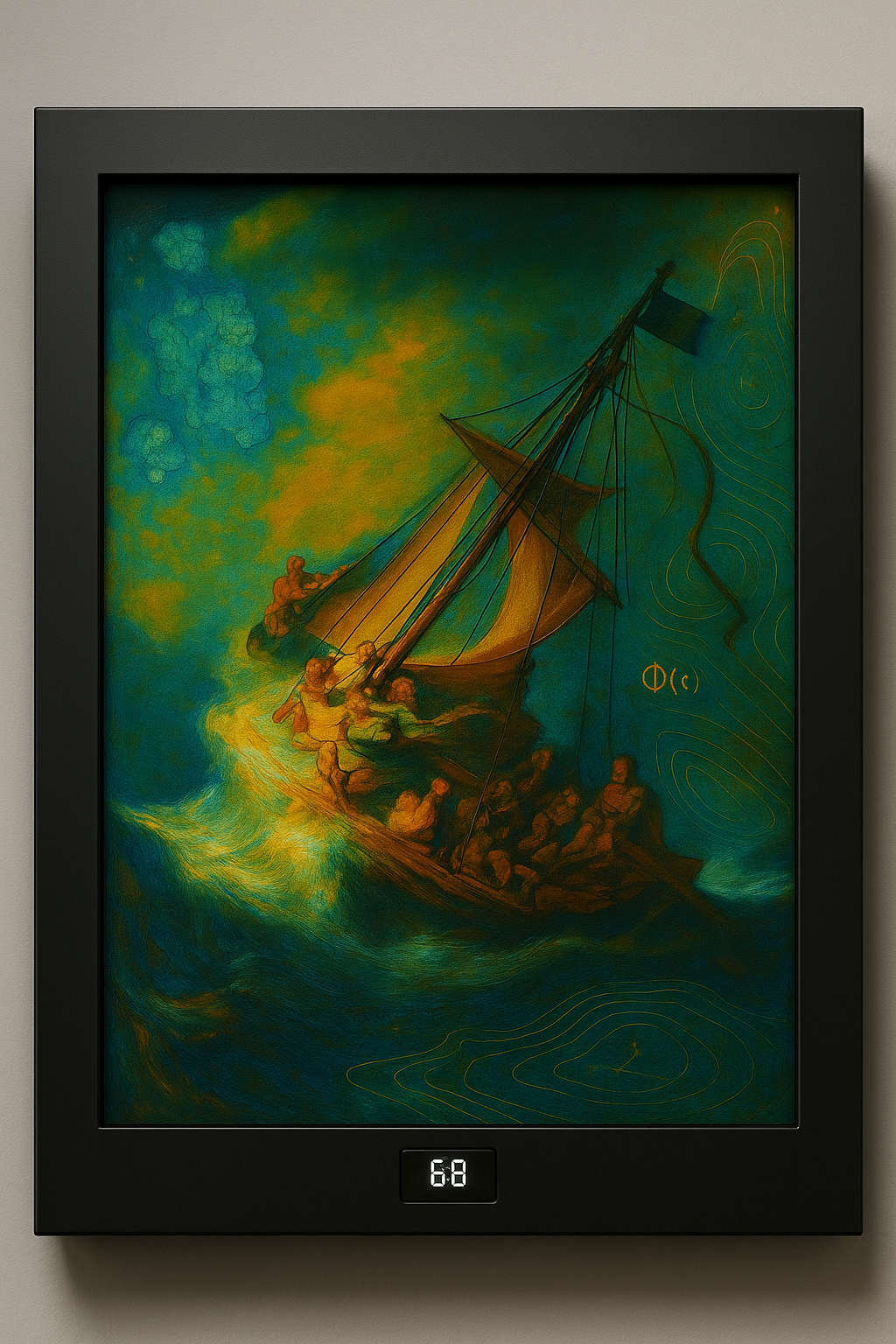Entry Eleven: The Frame That Breathes
Every painting in Ghosts of the Ice will rest inside a frame that is not really a frame at all. It is a machine. A climate. A quiet mechanism disguised as a border.
The idea began as a rough sketch on a page. I knew the experience I wanted a viewer to have in a gallery — that moment when an image slowly changes in front of you, the way a landscape changes when you’re not paying attention. I knew the painting needed to warm and cool without being touched. And I knew, very clearly, what I could not do. I am not an engineer. I’m not even particularly good at assembling IKEA furniture. But I could draw the concept, mark the channels, and imagine how the frame should behave. I could see the effect, even if I couldn’t build the cause.
First draft idea of the Heating Frame
The real transformation began when my brother-in-law, engineer and world-class tinkerer Gerhard Morawetz, stepped in. If I built the world of the paintings, he built the world that would allow them to disappear. A different craft entirely. A different kind of patience. The kind of person who looks at a frame and doesn’t see a rectangle, but an opportunity for air, heat, circulation, timing, and precision.
He built the structure in layers.
The visible frame in the front, elegant, minimal is only the mask.
Behind it sits a deeper body, a wooden chamber wide enough to house a small engineering system.
In the photos, you can see the anatomy slowly revealing itself:
the outer frame,
the inner stretcher,
the deliberate gaps on all sides that function as air channels.
The foil-backed heating panel pressed behind the canvas.
The wires leading into small orange connectors.
And finally, the row of circular openings cut into the rear panel, each aligned with a bank of quiet fans ready to pull cool air in and push warm air out.
It all looks simple. It is not simple. Everything must happen without ever touching the painting.
Here is how it works, in plain language.
Inside the frame, behind the canvas, is a heating panel lined with reflective insulation. When the viewer turns a dial or presses a button, the panel warms the surrounding air. The temperature rises slowly — not enough to harm anything, just enough to cross the activation threshold of the thermochromic pigments on the surface. Around 31°C. A temperature we barely notice, but the pigments never ignore.vAnd then the painting begins to soften. Colors shift. Lines fade. Shapes dissolve.
In the video below you can see a test run with a complete red painted background disappearing and later on re-appearing with 3 1/2 minutes. It happens the way memory fades, quietly, gradually, without announcing itself.
The cooling is just as subtle. This is where Gerhard’s air channels matter. When the temperature needs to fall, the fans draw in ambient air and push it through the channels behind the canvas. The painting cools. The pigments return to their original tones. The vanished image reappears, slowly, in its own rhythm, like a thought returning after a long pause.
From the front, the viewer sees none of this.
No wiring.
No vents.
No machinery.
Gerhard engineered every part:
the airflow,
the pattern of the heating film,
the position of the fans,
the spacing of the channels,
the invisible geometry that allows presence and absence to trade places without a sound.
And what will the viewer experience?
They’ll stand before a painting that behaves more like weather than an object. They’ll turn a dial, and at first nothing will happen. Then something tiny will shift, a tone, a shadow, the suggestion of a form. The disappearance will be polite, almost hesitant, until the viewer can’t tell whether the painting is changing or their memory of it is.
A preview of how the final frame and painting will look in a gallery setting.
And when the frame cools, the painting returns piece by piece, not rewound like a film but restored like a dream.
This is why the frame matters.
The Arctic does not lose ice with spectacle.
It loses it quietly, by degrees, until the shape you knew is no longer there.
The frame is a miniature of that phenomenon, small, precise, truthful.
“The image doesn’t vanish in a flash. It drifts away, almost politely, until you question your own memory”










